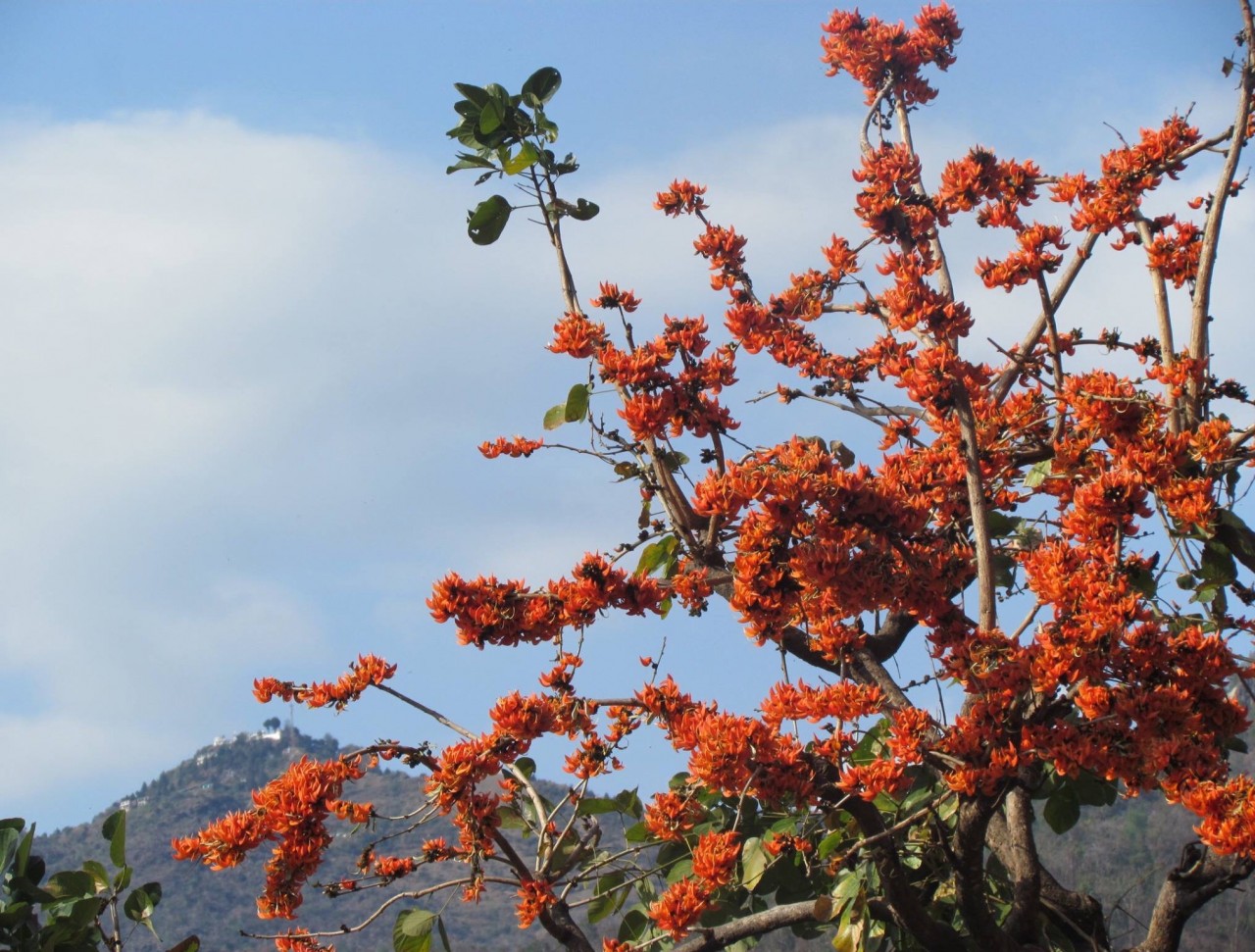Holi- is most popular as the festival of colours in India.
The colours of Holi are a reflection of spring with nature all around bursting into full glorious bloom and the birds in sweet song on a gentle cool breeze. It is time to shake off the heavy hibernating lethargy of the cold season and get set for the sprightly energy of spring. The flame of the forest(kesuda) is the harbinger of the season in the gaudiest orange, the flowers used to make a yellow coloured infusion in water: this being the ritualistic fragrant cooling bath water for Holi, and henceforth for the summer months ahead, it will be useful to treat skin disorders. The science from grandmothers ways never ceases to amaze in its simple pragmatic application to the adjustment of seasonal changes. Holi is also harvest time for wheat and most spices like cumin, corriander, fenugreek(methi), mustard etc. It is a major harvest festival, the other being Diwali.
Holi happens during the full moon of the month of Phalgun-spring when the sun is in zodiac Aquarius:300-330 degrees. From the previous dark moon of Shivaratri, winter cold shuffled away backstage to usher in warmer days and brightness of spring at full moon on Holi. Kapha that had collected during the winter months begins to surface and brings up most kapha related vitiations during the full moon when the water element is at a high. The flu also does its rounds around this time of the year. Holi is thence celebrated with foods that help dry these watery kapha phlegm disorders: popped barley and dates are the per se of the festival. Vamana(yogic shat karma of vomiting salt water) is recommended as a precautionary measure during the onset of spring.
Holi is mentioned in the ancient puranas. Vishnu- the creator, as Narasimha(human-lion) avatar destroyed the demon Hiranyakashyapu. Hiranyakashyapu had a boon that gave him five special powers: he could be killed by neither a human being nor an animal, neither indoors nor outdoors, neither at day nor at night, neither by astra (projectile weapons) nor by any shastra (handheld weapons), and neither on land nor in water or air. Hiranyakashipu grew arrogant, thought he was God, and demanded that everyone worship only him. His son, Prahalad, who was an ardent devotee of Vishnu did not abide by this despite many tortuous attempts by his father, and so, Holika( sister of Hiranyakashyapu) took on the job of putting an end to Prahalad. Holika had a protective cape which retarded fire and so, she sat on the pyre with the cape on her and Prahlad was to remain unprotected from the fire. The cape was blown away from her and while she burned to death, Prahalad remained unscathed. Vishnu, then took the form of Narasimha and enviscerated Hiranyakashyapu while placing him on his lap, using his claws which qualify as neither Astra nor Shastra, at the hour of dusk, on the doorstep. Vishnu, the creator in the Hindu trinity takes avatar to restore the good over evil. Burning the fire of Holi symbolises the burning of negativity. The collection of the firewood and arrangement of the pyre is delegated to the youth; the burning pyre is collectively worshipped by women circumambulating with water and offerings of popped grains, sugar candy and coins into the fire. I remember that as a child, my friends and I rummaged through the cooled ashes the next morning to find a few blackened coins to go buy some sweets with. My mother was not at all impressed with my non dogmatic angle to a hol(i)y ritual. Overall, it is a time to gather together to celebrate the triumph of good.
Holi is also a celebration of love, using the example of Krishna and Radha enjoying the playful throwing of colours. Vrindavan and Mathura, places of association with Krishna's childhood have five whole days of festivities. The usual festivity is for two days: the first being the burning of the pyre of Holika and the second day of frolic and jubilant colouring of anyone and all that one comes across. Children and adults alike make merry with much abandon; social or any other barriers break down and none is spared from the all encompassing gleeful revelry of colouring up and the last of the feasting festivities. The social implications of such festival fervour are akin to a purging of the negativity and the popular saying in Hindi is 'Bura na maano , Holi hai'...don't take it badly, it is Holi after all..a time to forgive the past and move on into the new year coming up with the next dark moon.
How to make Holi colours:
Yellow- turmeric
Red- turmeric mixed with lime(used in making paan)
Blue- indigo
...now that the primary colours are ready, get rolling. Ah yes, don't forget the kesuda bath water..to wash away the colours and cool down after the fervent playful day. HAPPY HOLI



